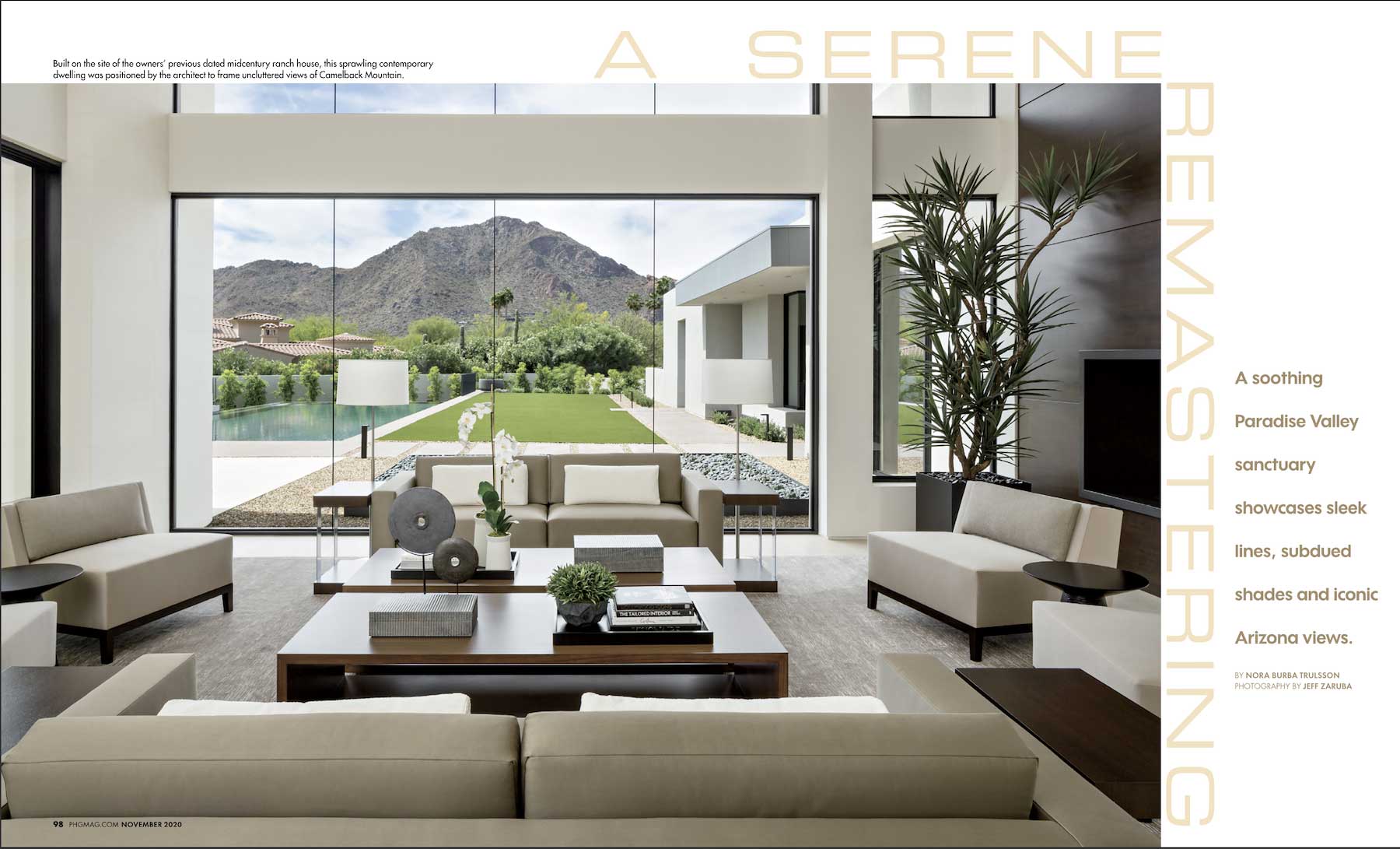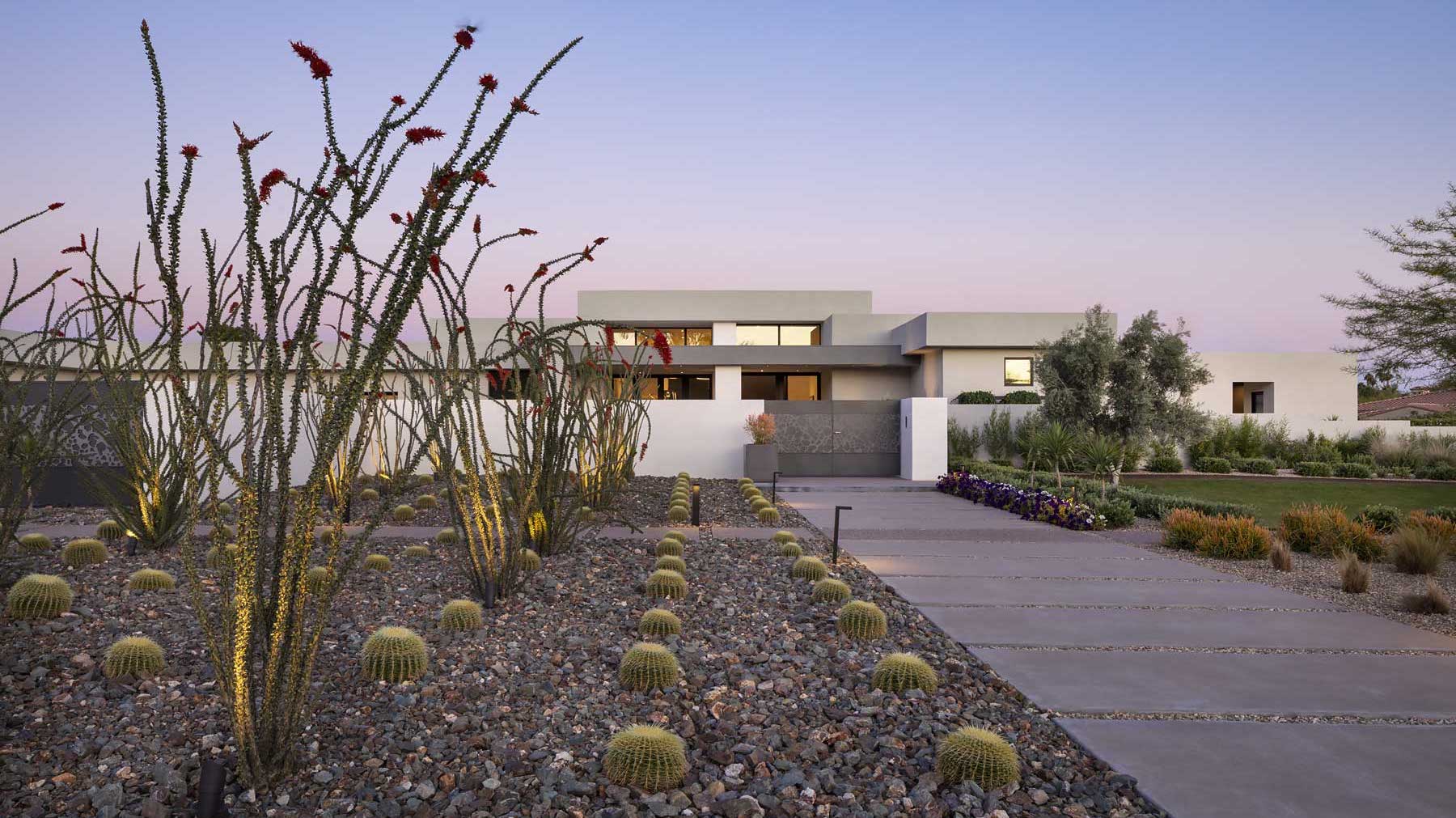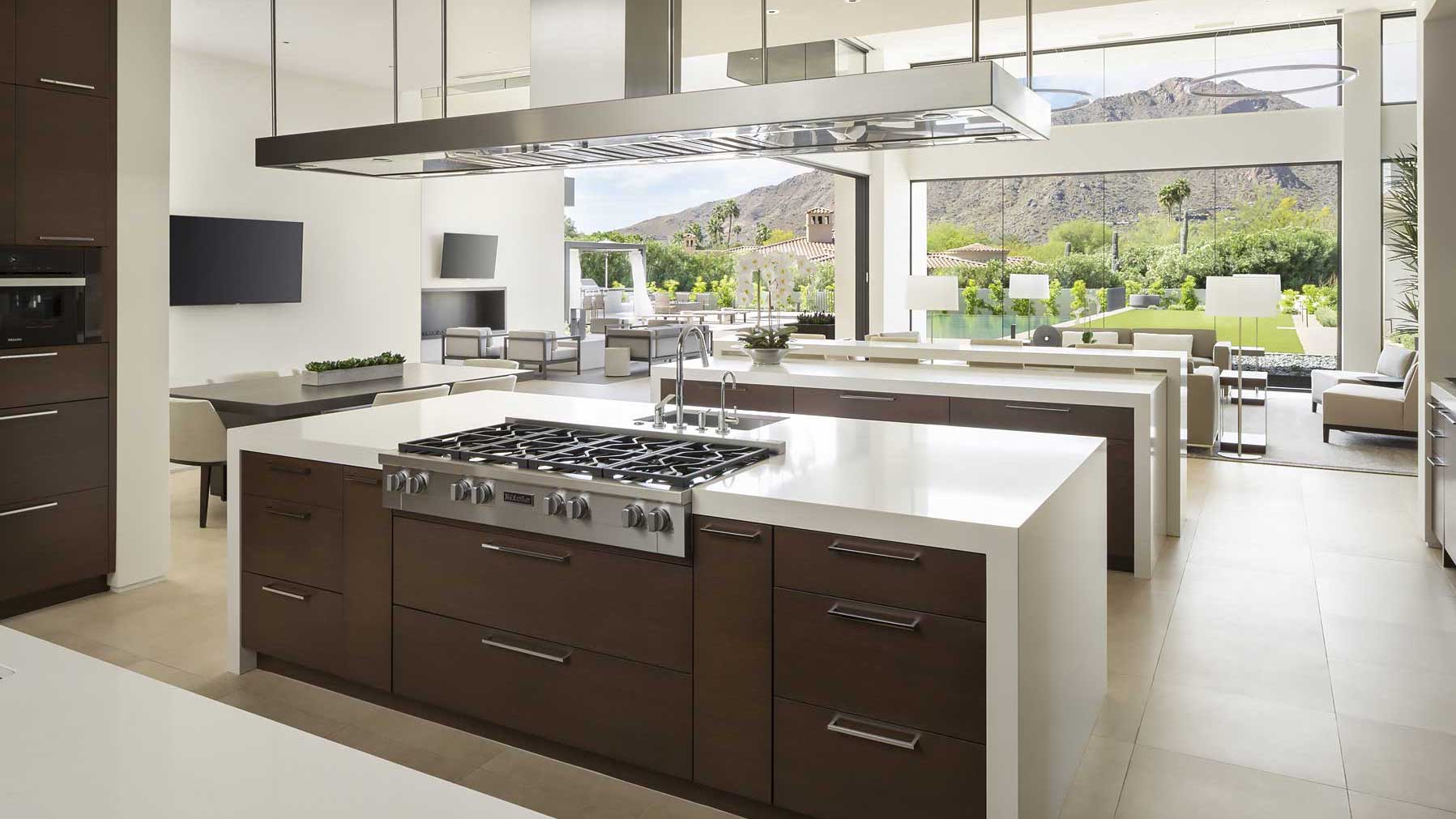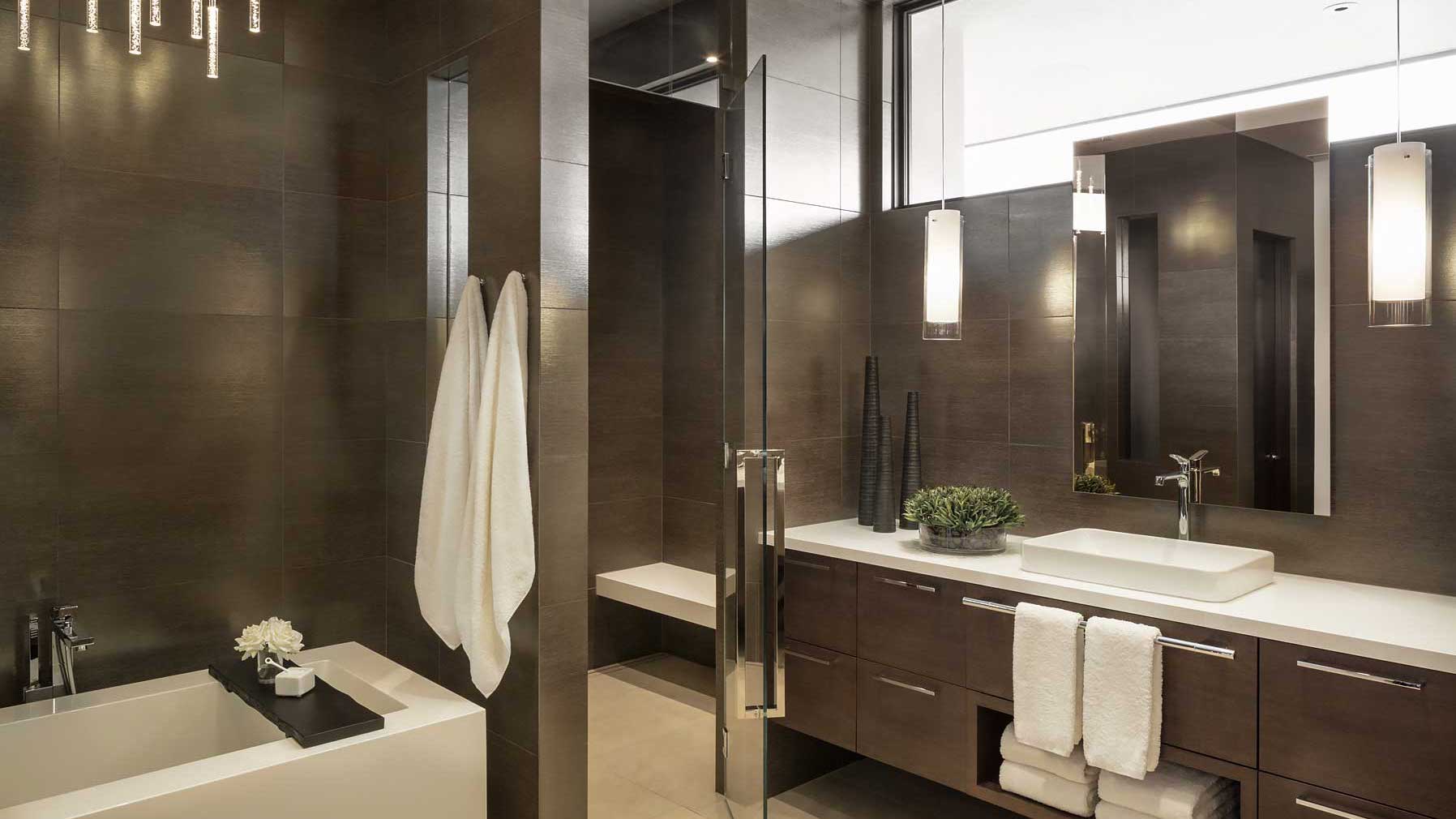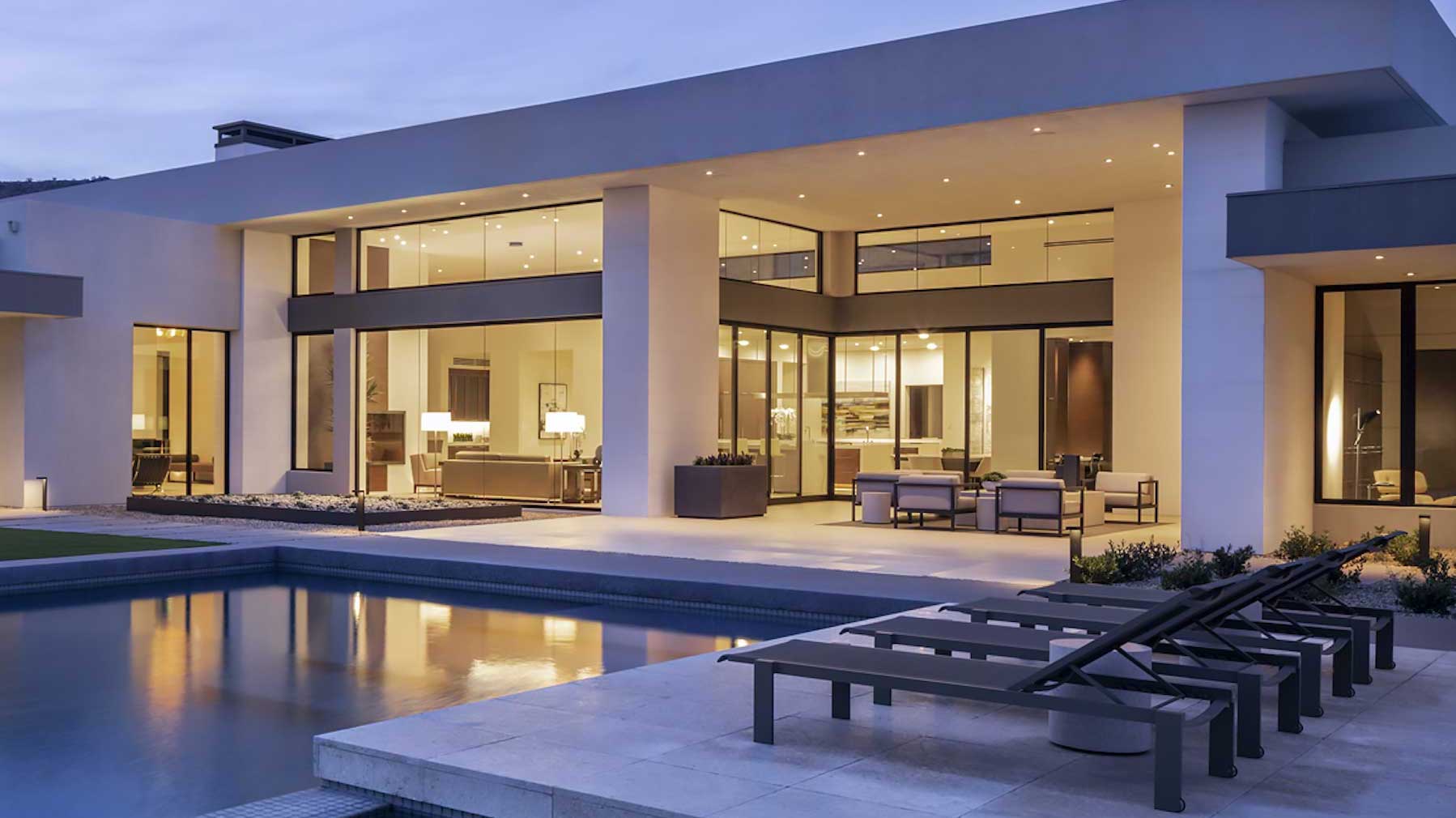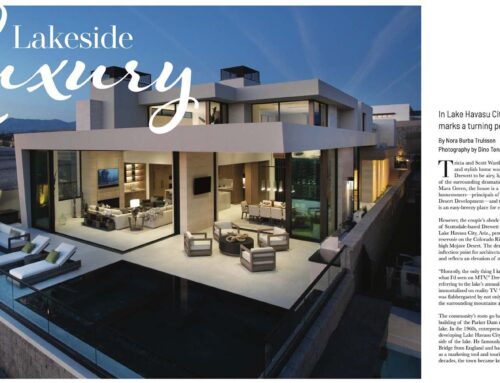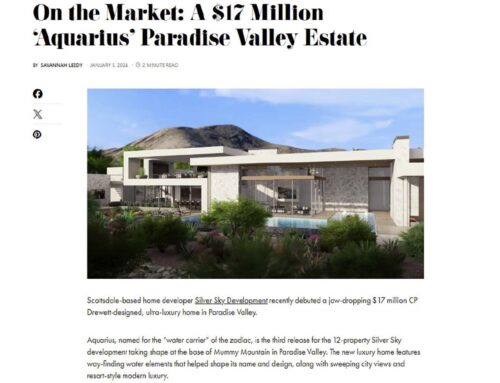Drewett Works project White Box No. 2 was featured in the November 2020 issue of Phoenix Home & Garden. Thank you to PH&G magazine for featuring the project, writer Nora Burba Trulsson for a beautiful article, and photographer Jeff Zaruba who brings the architecture to life on the page. Enjoy!
A Serene Remastering
A soothing Paradise Valley sanctuary showcases sleek lines, subdued shades and iconic Arizona views.
Written by Nora Burba Trulsson
Photography by Jeff Zaruba
From the street, the house is a study in crisp, white minimalism, its rectangular wall planes contrasted by shaded voids of patios and windows, all accented by dark metal details. Inside, the airy abode is elegantly spare, marked by neutral hues and furnishings that are a far cry from fussy. At the end of the day, the home is a calming retreat for a pair of busy physicians and their two school-age sons.
But this scene of domestic bliss wasn’t always so idyllic. The Paradise Valley dwelling began as a 1950s ranch that the family had occupied for several years. “The ceilings were so low that a tall friend hit his head when he visited,” explains the wife. And the house was surrounded by a ring of oleanders and old olive trees, so we couldn’t really see Camelback Mountain.”
Desiring a more contemporary home — and still liking their neighborhood — the couple decided to tear down the original structure and start fresh with a modern house that maximized indoor-outdoor living, took advantage of mountain vistas and had a family-friendly floor plan.
“We knew they had some kind of sightline of Camelback Mountain,” recalls architect C.P. Drewett, who sensed the property’s possibilities when he walked the 2-acre lot and peered through the dense vegetation. “They also had a predisposed sense of how the new house would be placed on the lot — but after much discussion in the planning stage, we unwound that perception and repositioned the home to maximize the views.”
Drewett came up with a plan for an 8,000-square-foot dwelling that angles around the entry and auto court in front and a lap pool and patio in back, facing the mountains. While an open great room, kitchen and informal dining space make up the core of the floor plan, the five-bedroom abode also incorporates the specific spaces the homeowners requested, including a formal dining room, a parlor that would be anchored by the family’s grand piano, an area for the boys where they could study and play video games under the watchful eyes of their parents, a master wing with a large exercise room and a separate guest wing.
Inspired by the work of Mies van der Rohe, Drewett’s design is free of excess. “This house is an exploration of mass and void,” the architect explains. “It’s all about walls and windows, with repeating rectangular forms. While there’s not a lot of color, the interest comes from subtle textures.”
According to builder Tom Argue, “The clients wanted a clean, architecturally simple house. They were interested in using sophisticated materials, inside and out.” Working with smooth plaster, raked limestone accent walls, zinc overhangs and steel accents, Argue paid close attention to how walls came together and ensured that materials matched and details, such as window reveals, were laid out perfectly. “When you build an Old-World influenced design, you can use a lot of products to cover up something that’s not level or perfect,” he remarks. “Building a modern home is more demanding. Everything is visible. You need a lot of care to get everything perfect within a millimeter.”
Interior designer Claire Ownby’s less-is-more approach underlined the home’s serene atmosphere. “The owners wanted a restrained, minimalist approach to the finishes and the furnishings,” she explains. “The challenge was to get those clean lines with a bit of softness, so the house wouldn’t look institutional.”
Ownby, a Phoenix Home & Garden Masters fo the Southwest award winner, kept the color palette neutral, focusing on such soothing shades as putty, oyster, greige, white and espresso. Background materials include pale, large-format porcelain tile flooring in the abode’s main spaces, dark wood flooring for the master suite and deeply hued cabinetry throughout. The owners like the dark/light combination for its timeless warmth. “We used a repetition of materials, cabinetry profiles and colors to provide a common thread overall,” says Ownby.
The interior designer suggested furnishings with sleek lines and comfortable upholstery, juxtaposed with sculptural plants and wood accents. The dining room’s walnut slab table provides an earthy contrast to the polished chrome droplet pendant lights and, in the parlor, Barcelona chairs underscore the home’s modernist influences and provide a quiet spot to hear someone play the grand piano.
In the kitchen, three islands, clad in bright white waterfall countertops, serve different purposes. One, closest to the boys’ study and game areas, is for youthful hangouts. The center island is for serious food prep, and the third, which is closest to the guest room, is where guests congregate while dinner is being made.
While no interior details was left unattended, what is missing are TV screens dotting the rooms. “We are bombarded by technology all day long,” says the wife. “We kept the bedrooms and great room free of TVs. Instead, we gather in the media room if we want to watch something.”
What the family never tires of looking at, however, are the clear mountain views from their outdoor spaces, thanks to the geometric garden design created by landscape architect Russell Greey, also a Masters of the Southwest award winner. “Though this was a fairly large property, there was a lot of programming we had to fit into the site,” Greey explains. “They’re an athletic family, so we worked in tennis and sport courts, a 60-foot-long lap pool, an auto court, and a grassy area for the boys.”
In the front yard, Greey devised a grid pattern of golden barrel cacti and ocotillos interspersed with turf. Low garden walls and metal gates define the auto court and the front entry sequence. “We repeated the home’s rectangular pattern in the landscape,” Greey points out.
For the backyard, a slight slope allowed the main patio to be several steps above a large expanse of lawn and provided the opportunity to give the lap pool a negative edge. A steel cabana, softened by sheer drapes and located next to the outdoor kitchen, is a sheltered spot for dinners alfresco. More seating was added on a shaded patio adjacent to the great room.
After the couple had lived in the house for some time, they asked Masters of the Southwest award-winning landscape designer Jeremy McVicars to add to the landscape palette with more desert plants, including sages, native grasses, agaves, and aloes.
For the two doctors, the construction process was a welcome diversion from their hectic careers. “We were involved in all the details,” says the wife. “We paid attention to how things worked and felt. For us, this was a creative outlet. In medicine, it’s all science.” And now that their home is complete, it’s a welcoming haven for the family. The wife adds, “After a long day, this is the best place to retreat. It’s like being in a spa resort.”
See more of White Box No. 2 here:
Meet the White Box No. 2 team
- Architecture: Drewett Works
- Builder: Argue Custom Homes
- Interior Designer: Ownby Design
- Landscape Architecture: Greey | Pickett
- Photographer: Jeff Zaruba

